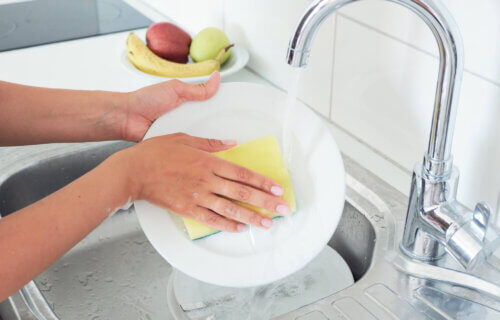
DURHAM, N.C. — Germaphobes beware, it may be time to ditch the kitchen sponge for good. A new study by Duke University researchers found the average kitchen sponge is crawling with more bacterial species than a lab Petri dish. In fact, no matter how much you replace your sponge, you’ll always run into the same issue. The new findings show it’s not the dirt, but rather the structure of the sponge that makes it a friendly place for microbes to live.
Similar to humans, some bacterial species like to live with their fellow germs, while others prefer to live alone. In the new study, researchers found bacterial species that prefer a “mixed-housing environment” were more likely to live in your kitchen sponge.
“As it turns out, a sponge is a very simple way to implement multilevel portioning to enhance the overall microbial community,” says Lingchong You, professor of biomedical engineering at Duke, in a university release. “Maybe that’s why it’s a really dirty thing — the structure of a sponge just makes a perfect home for microbes.”
The results could help industries that use bacteria to clean up pollution or produce commercial products to consider the ideal structural habitat for microbes.
Sponges give bacteria plenty of space to thrive
The researchers identified and tracked the population growth of 80 different E. coli strains in several laboratory growth plates. The plates provided multiple options for bacteria to live in from six large wells to 1,536 tiny wells. The large wells mimicked environments where microbial species can mix and live with other species. The small wells mimicked spaces of bacterial species who prefer a solitary existence.
“The small portioning really hurt the species that depend on interactions with other species to survive, while the large portioning eliminated the members that suffer from these interactions (the loners),” You adds. “But the intermediate portioning allowed a maximum diversity of survivors in the microbial community.”
The findings suggest structural environments with large spaces in between could help microbes thrive. When testing this with a kitchen sponge, the team found it held even more microbes than any other laboratory equipment they tested.
The study is published in the journal Nature Chemical Biology.
